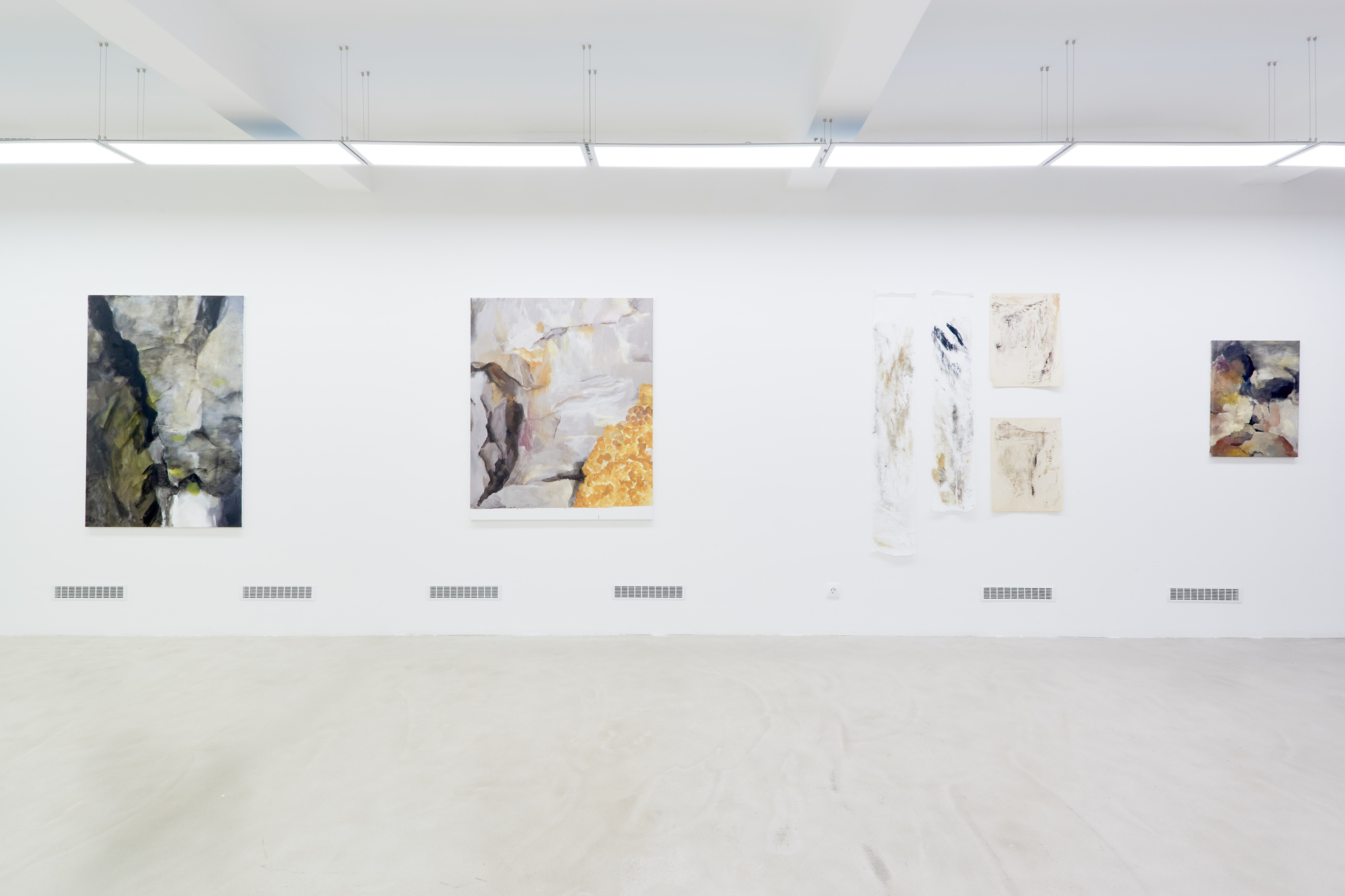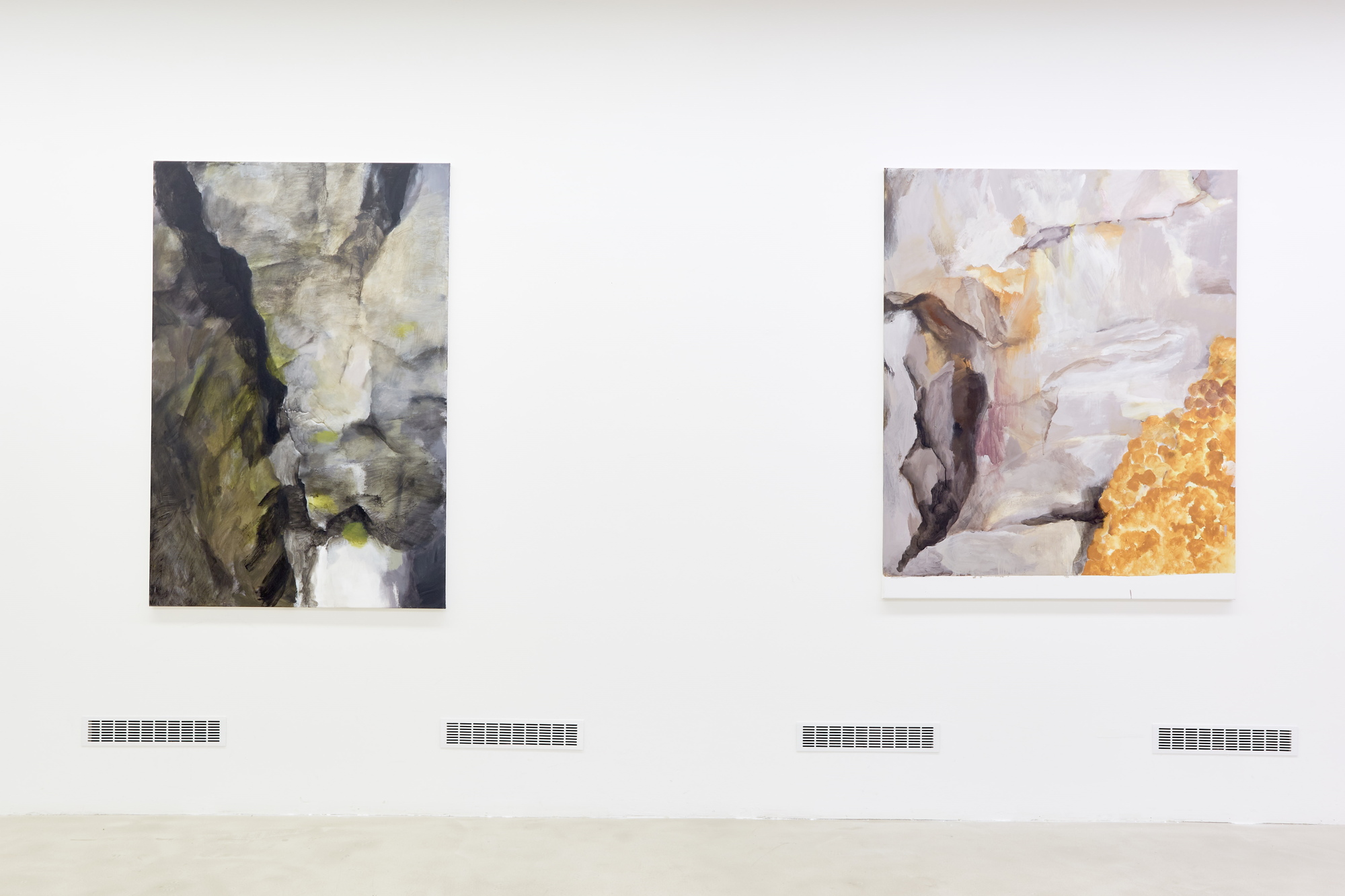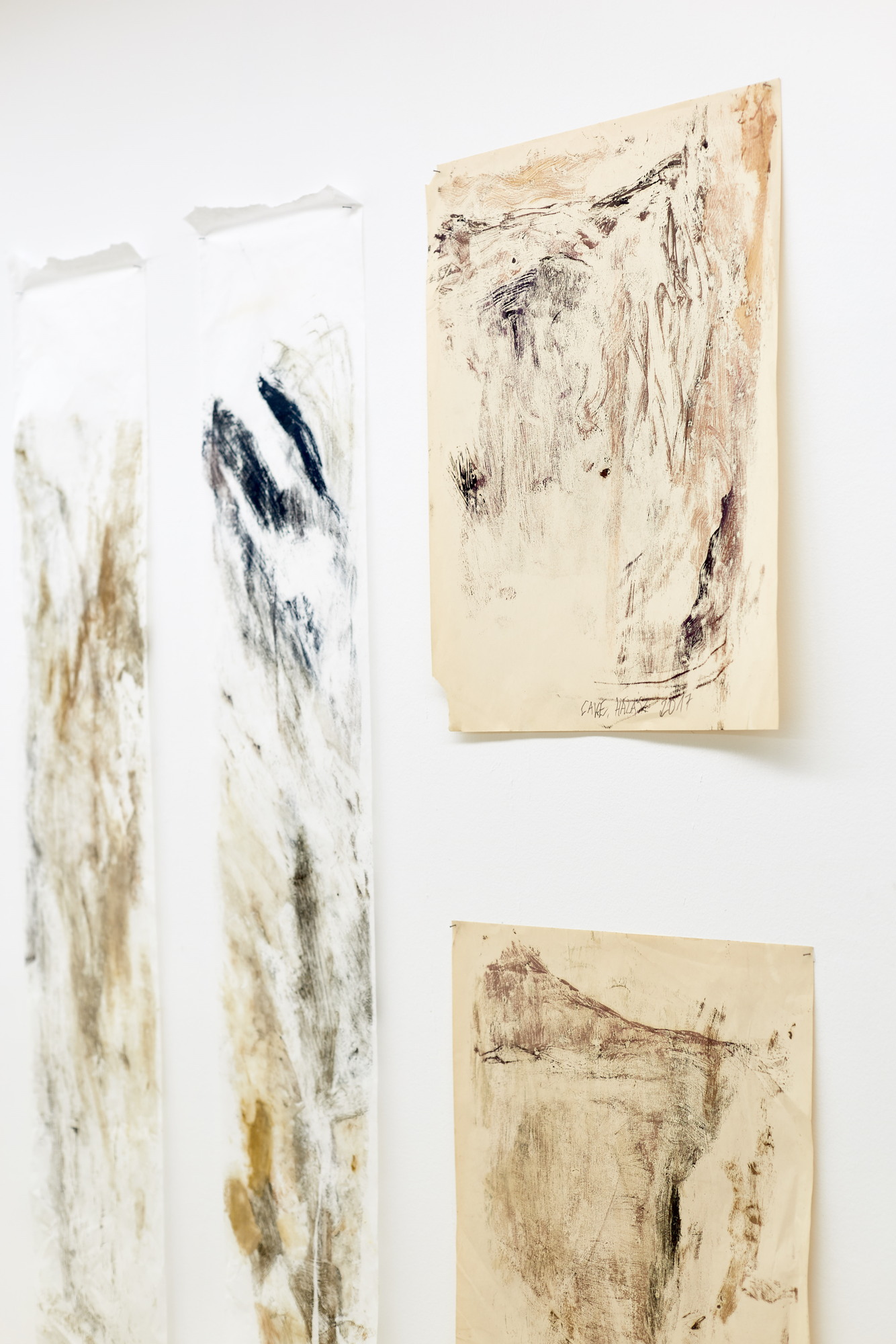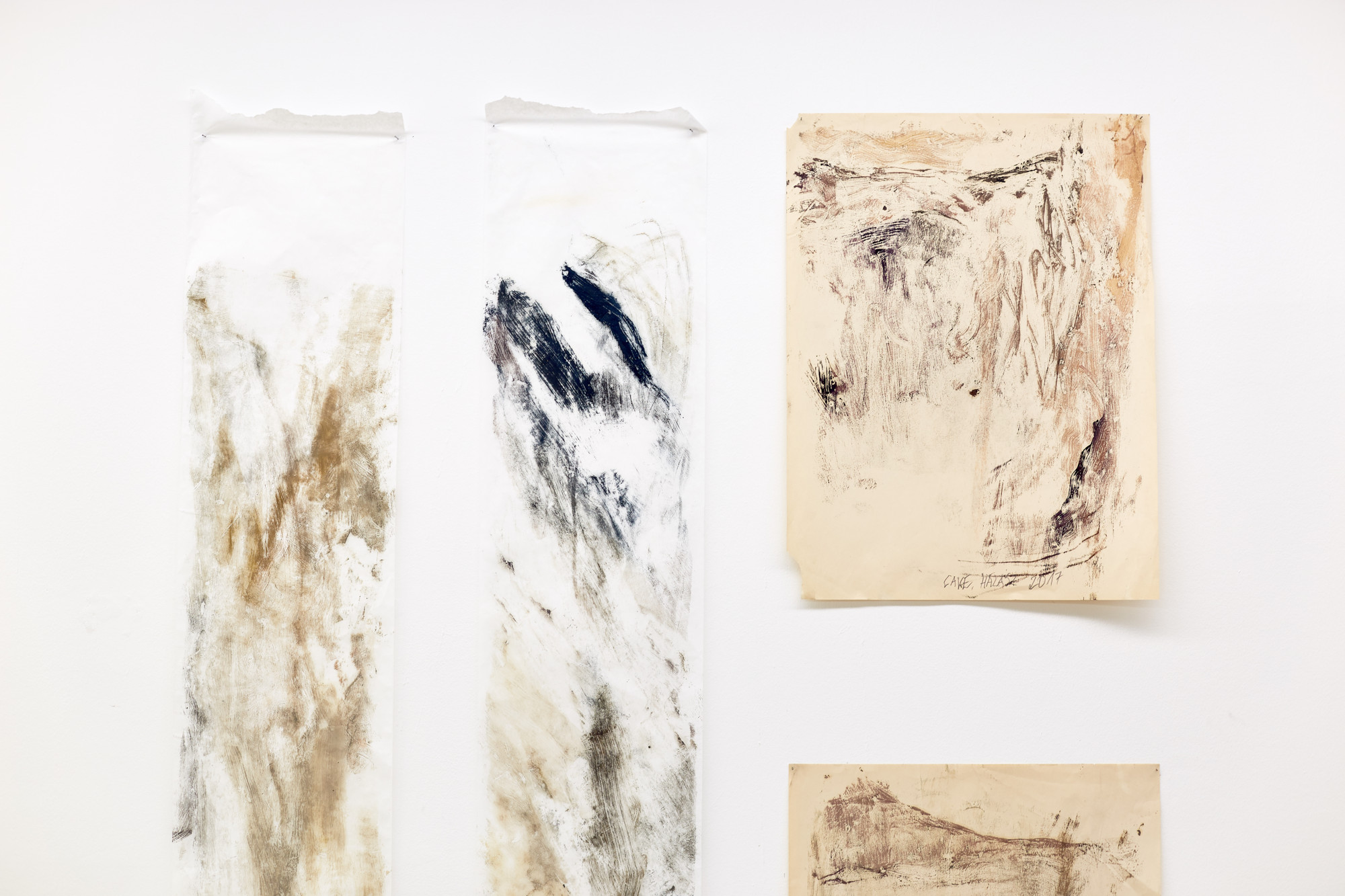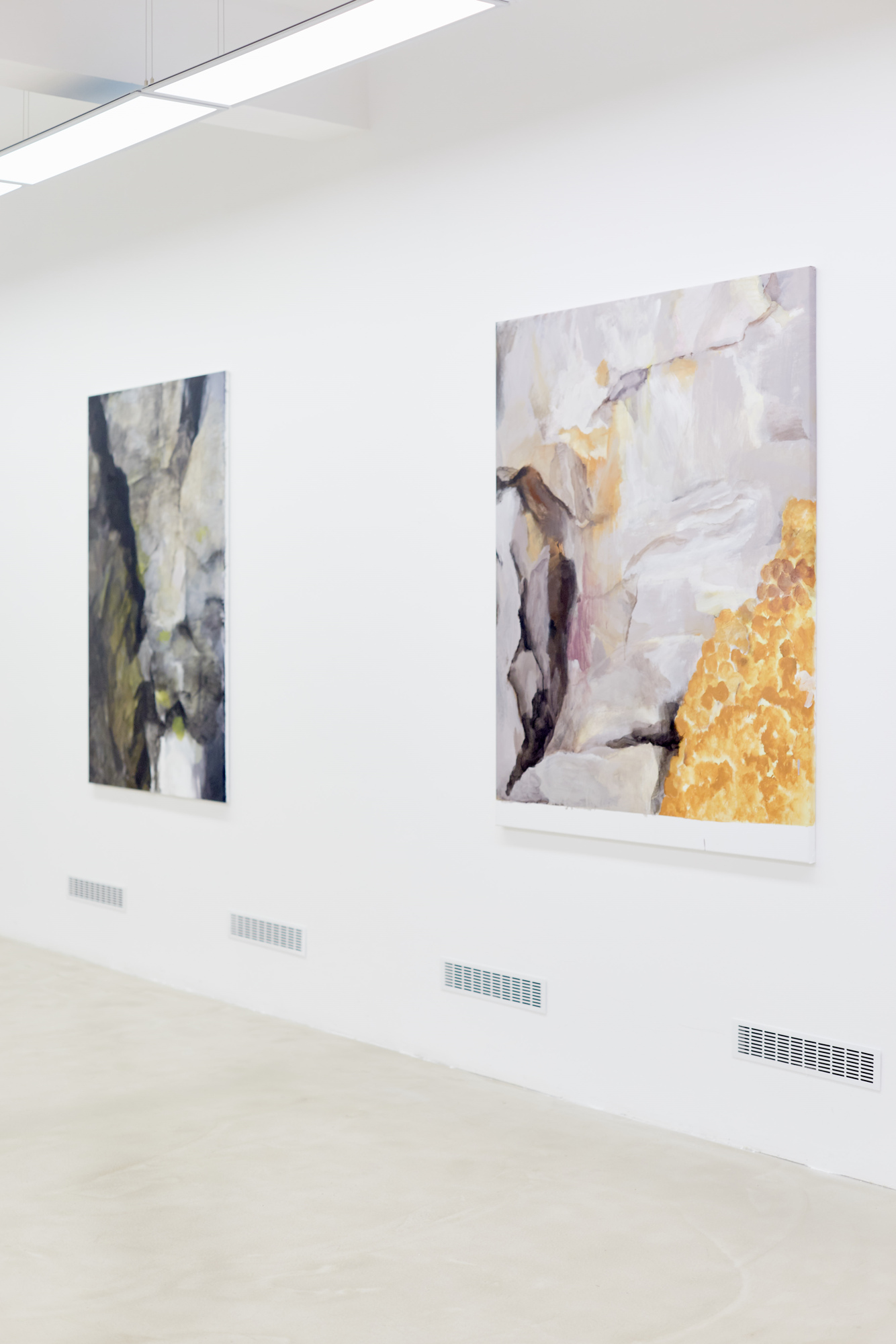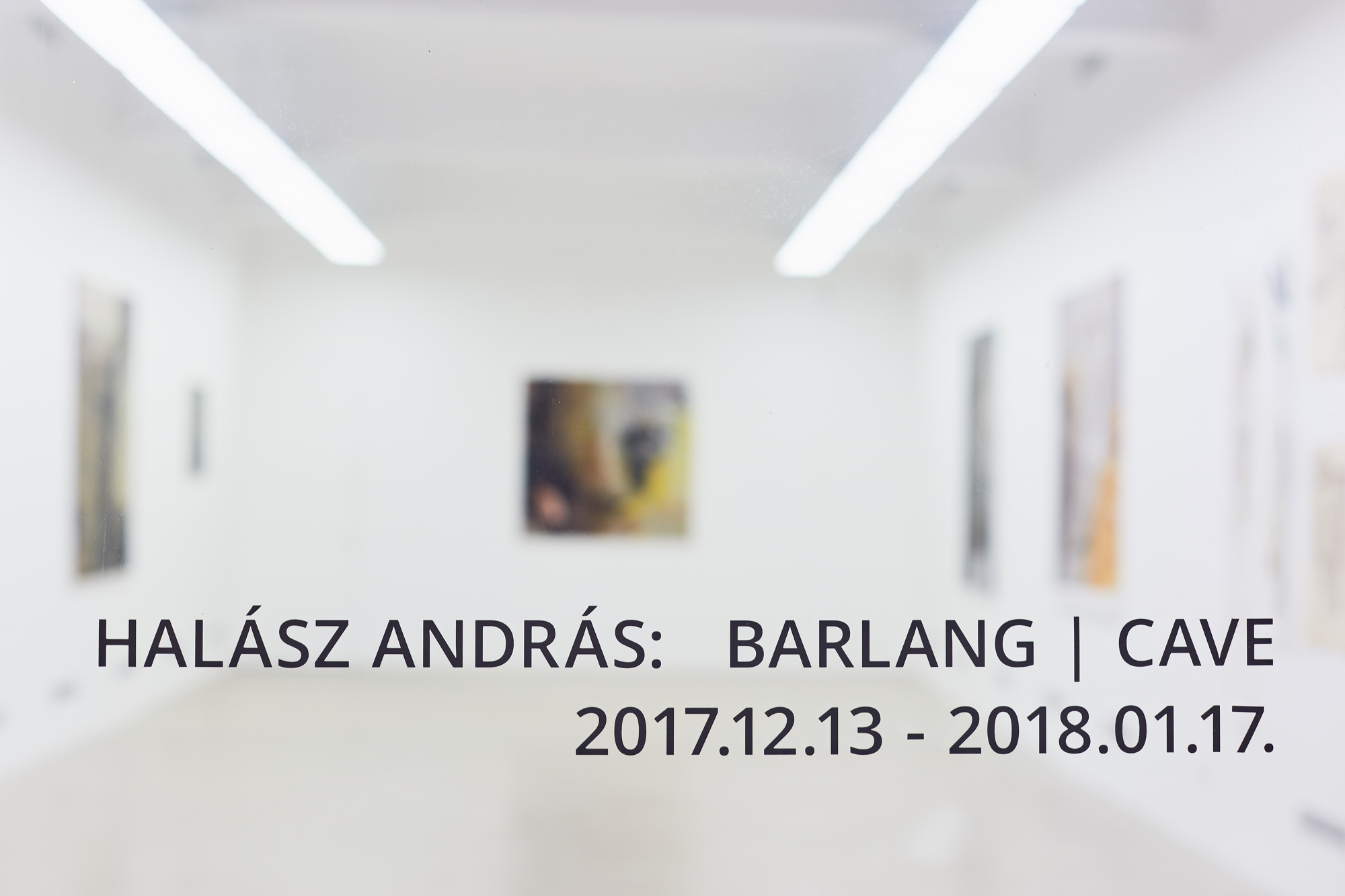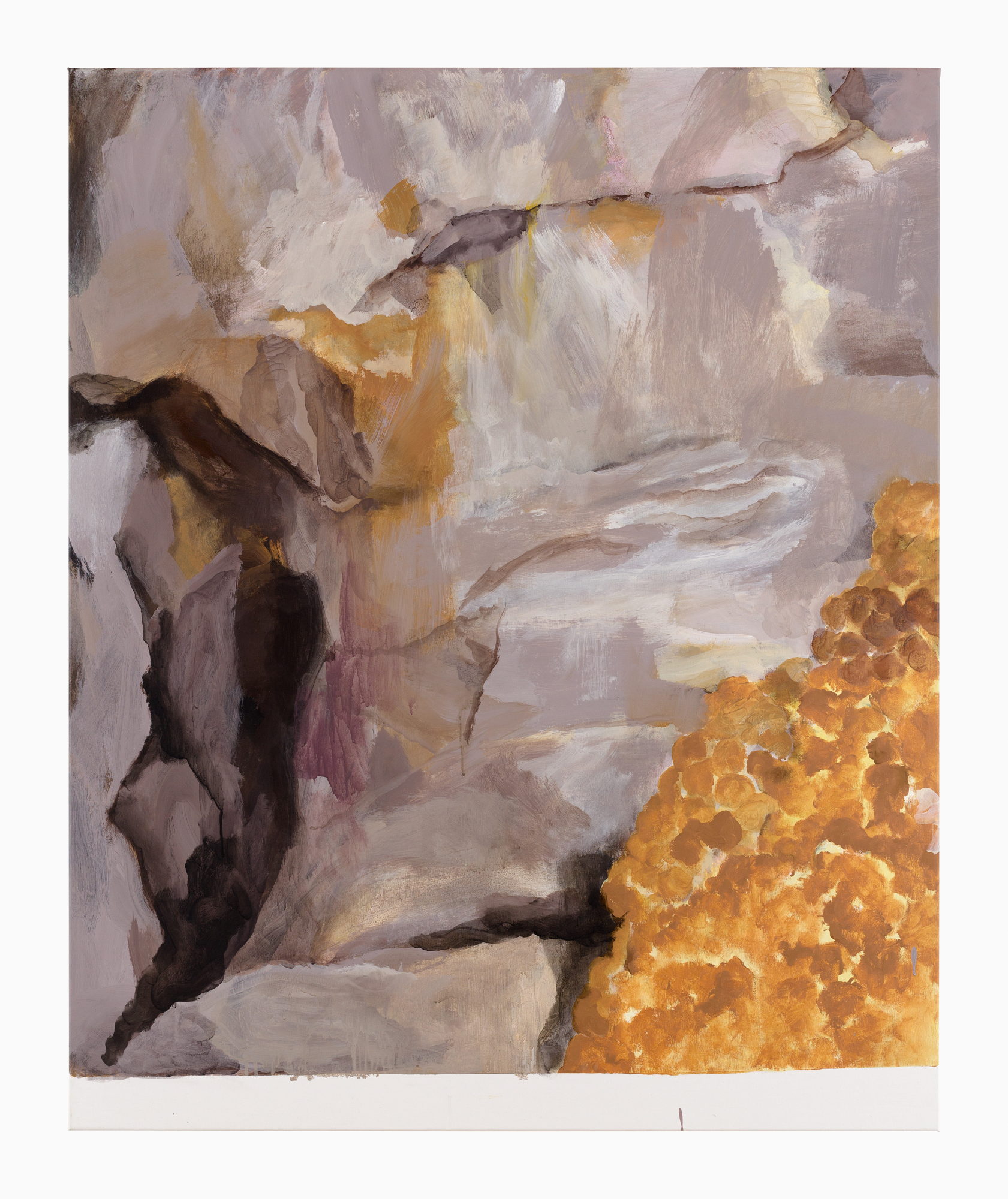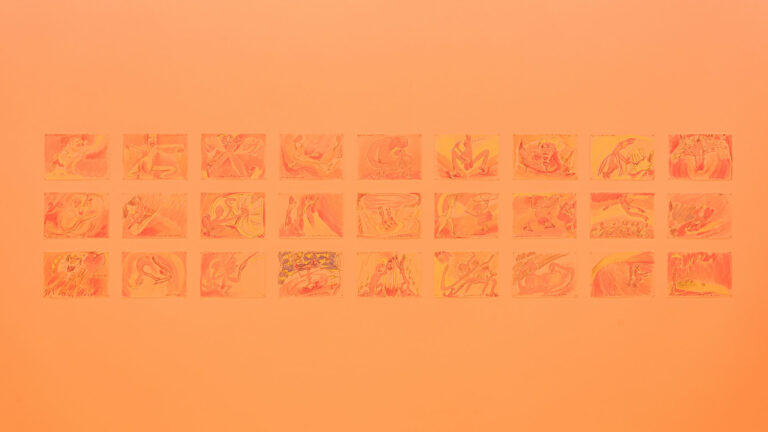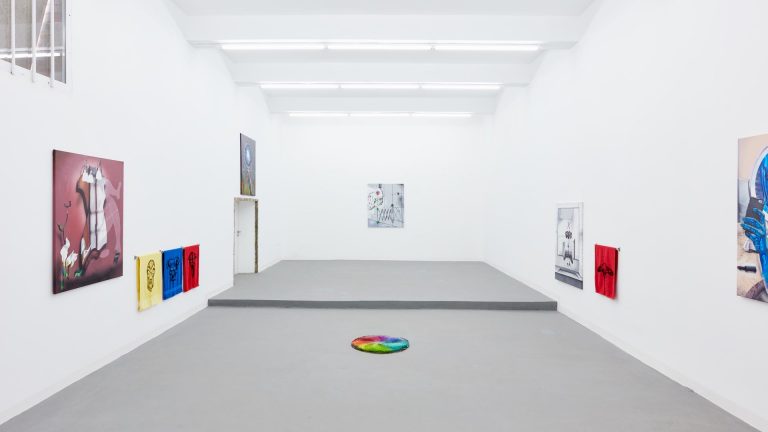Artist: András Halász
Exhibition title: Coming out or going in
Venue: Horizont Gallery, Budapest, Hungary
Date: December 13, 2017 – January 24, 2018
Photography: Dávid Biró / all images copyright and courtesy of the artist and Horizont Gallery
Andrea Szegő took me to the Szemlő-hegyi-cave in a hot summer afternoon of 2016. The cave is a very pleasant place -14 centigrade- supposedly absolutely virusfree. The air has a healing power. The paintings, and drawings of mine (cave-art) are born out of the intention to heal.
A tour guide introduced the cave, told and showed everything what one has to know about it. He left not much room for discovery, I can only say. Man awes of the richness of nature. Frankly – except the Ocean – there is nothing much that attracts me. Maybe the desert had a strong impact on me. I painted pictures about those too. Basically I am not a nature freak, I am not the type who admires anything. I am rather a seamen than an admiral (pun intended). In any case to paint pictures about a cave looks like a good opportunity to show the general state I am in as much as the valid state of the actual world. We started out as painters of the cave, although our actual dwelling can be qualified as home if we recognize cavernous in it.
Shadows are what populating my room – not ghost! Shadows are enough for me. Shadows are shadows to explain this tautology: for example, I look at the shadow of my desk, I can even jump over it (I mean over the shadow). The only shadow I can’t jump over is my very own body. In the 70‘s, I tried to overcome this. I produced dozens of photograms to record the experiment of impossibilities.
Back to the healing power of my paintings, inevitable raising a question: what exactly we have to heal from? What kind of disease we have to cure ? That is to say: your sickness is yours. If we wish to any person quick recovery what that means we are obstructing a person in the process of individualization.
(Doctors – in general – understand this. I spent 2 days (4 years ago) in a hospital. The chief doctor inspected the patients and gave quick instruction to his colleges. At some point I interrupted him:”Doctor, I have psoriasis too”. He with pretentious seriousness reposted: “Don’t flatter yourself”.
I have to thank Noémi Szabó Fórián, who helped me to apply for a grant from NKA (National Cul- tural Foundation). I regard this action as a step for my own healing, capable to blend into the society. Due to the recent political regime it maybe the last opportunity, to do so. Last year I had a show in Műcsarnok. Many of my friend saw that as a collaboration with MMA. I was showing the works to commemorate all the artist who had a show there either before or after their death.
Lot of people tried to bury painting for many times, it is a possibility that I have to hide and be an outlaw. I am twofold grateful for Balázs Arató and the Horizont Gallery to provide me this show. I don’t have to retire in a secret cave, live like a monk.
Ceterum censeo : Way I live is the same as I paint and viceverse.
András Halász was born in Budapest, Hungary, 1946. He graduated from the Hungarian University of Fine Arts from the department of art and graphics, in 1976. As an art-student he organized avant-garde artists into a forum called the Rózsa Group which met in the Rózsa Espresso. It was here they performed fluxus events. After completing his studies Halász experimented with a number of different art forms like photograms, conceptual works, and performances. He frequently showed his works and participated at art events in alternative clubs, private homes, and community centres. His first one-man show of photos and photograms entitled Interest was in the Székesfehérvár House of Youth and Pioneers (Hungary) in 1978.
Halász left Hungary that same year because he felt his intellectual and artistic activity was stifled and could not have progressed further in the political-cultural environment of that time. He left for Paris, then for New York.
In New York he became deeply involved in painting. There, in 1982, he was awarded with a fellowship and studio space in P.S. 1 (Project Studios 1) by the NYC Art Council. It also provided frequent opportunities to show his paintings. His works were on show in numerous New York galleries, amongst them in the famous East Village galleries that introduced the most progressive movements in the 1980s.
Since 1990, he could visit legally his native country, Hungary, and regularly held exhibits in Budapest: From the late 1990s, he had fewer-and-fewer conceptual elements and focused on pictorial vision.
Around the year 2000, he started to paint still lifes and interiors with objects of his daily life that were not particularly interesting or beautiful: table, chair, ladder, wardrobe, washing machine, bubble wrap. Halász eliminates the artistic look yet his method of painting is strictly conventional. His palette is reduced to white, grey, and brown, which colours underline a sort of austere, puritanical mindset and rather evoke a metaphysical atmosphere.
In 2005, he moved back to his native country and was given a position as a Professor of Art at the Hungarian University of Fine Arts, Budapest, the same university in which he studied.



